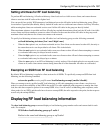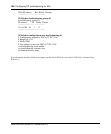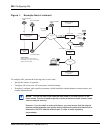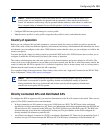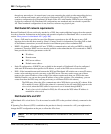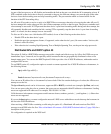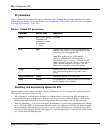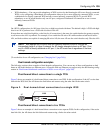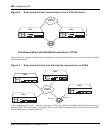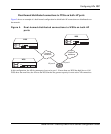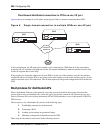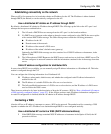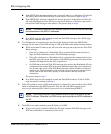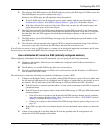
204 Configuring APs
NN47250-500 (320657-F Version 02.01)
AP parameters
Table 1 summarizes parameters that apply to individual APs, including dual-homing parameters. (For infor-
mation about parameters for individual radios, see “Configuring a radio profile” (page 250) and “Configuring
radio-specific parameters” (page 255).)
Resiliency and dual-homing options for APs
APs can support a wide variety of resiliency options. Redundancy for PoE, for data link connections and for
WSS services can be provided to the AP.
• PoE redundancy—On AP models that have two Ethernet ports, you can provide PoE redundancy by
connecting both ports to PoE sources. PoE can come from a directly connected WSS or a PoE injector.
Dual-homing support for PoE is automatically enabled when you connect both AP Ethernet ports.
• Data link redundancy—You can provide data link redundancy by connecting both Ethernet ports directly
to one WSS, two WSSs, an intermediate Ethernet switch, or a combination of WSS and Ethernet switch.
If an intermediate Ethernet connection is used, you also need a Distributed AP configuration on a WSS
somewhere in the network. Dual-homing support for data link redundancy is automatically enabled when
you connect both AP Ethernet ports.
Table 1: Global AP parameters
Parameter Default Value Description
name Based on the port or
Distributed AP
connection number.
For example:
•AP01
AP name.
bias high Setting an AP’s bias on a WSS to high causes the
switch to be preferred over switches with low bias,
for booting and managing the AP.
Note: Bias applies only to WSSs that are
indirectly attached to the AP through an
intermediate Layer 2 or Layer 3 network. An AP
always attempts to boot on AP port 1 first, and if a
WSS is directly attached on AP port 1, the AP
boots from it regardless of the bias settings.
group None Named set of APs. WSS Software load-balances
user sessions among the access points in the
group.
upgrade-firmware enable Automatic upgrade of boot firmware.
blink disable LED blink mode—blinking LEDs on an AP make
the AP visually easy to identify.




